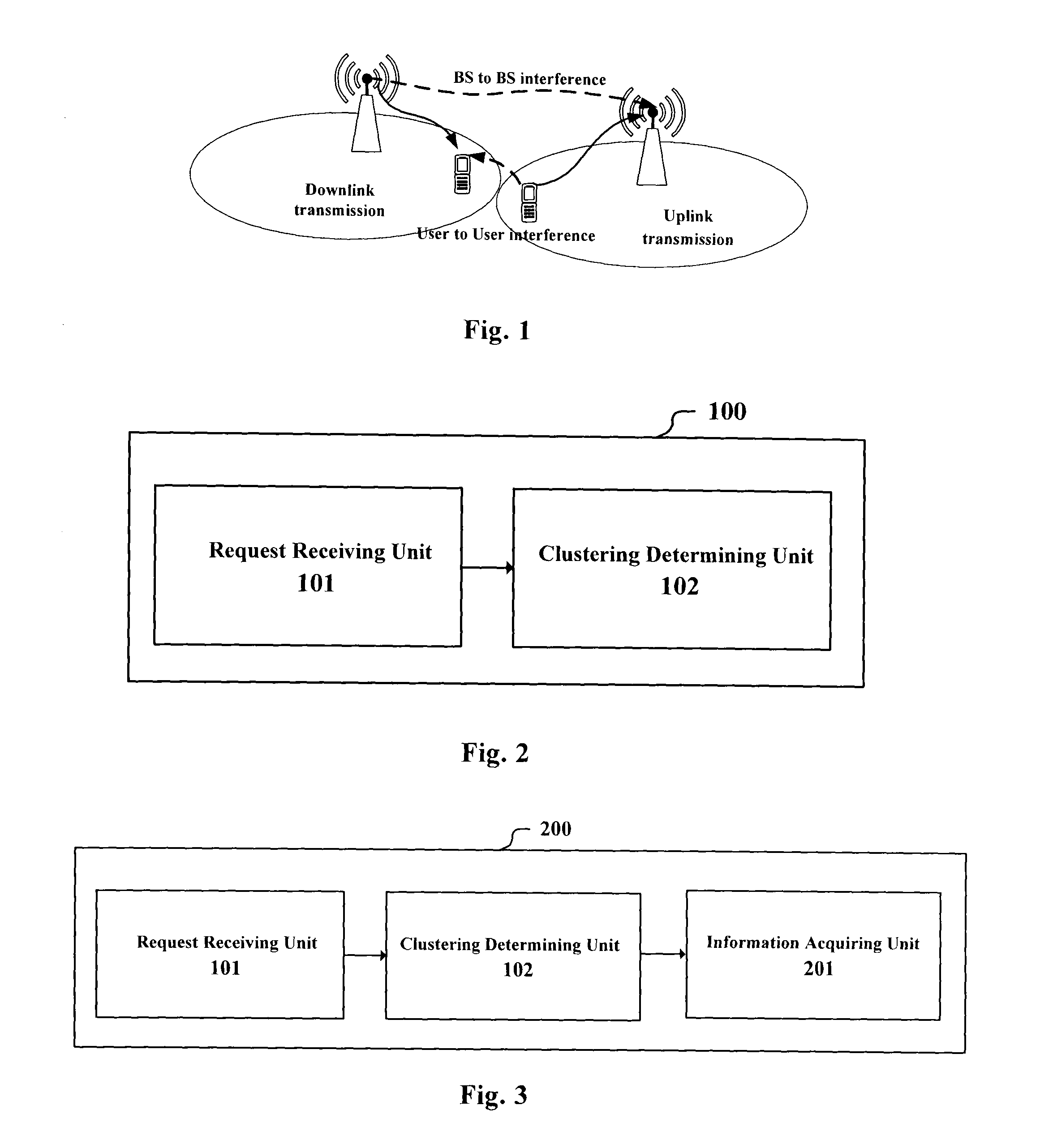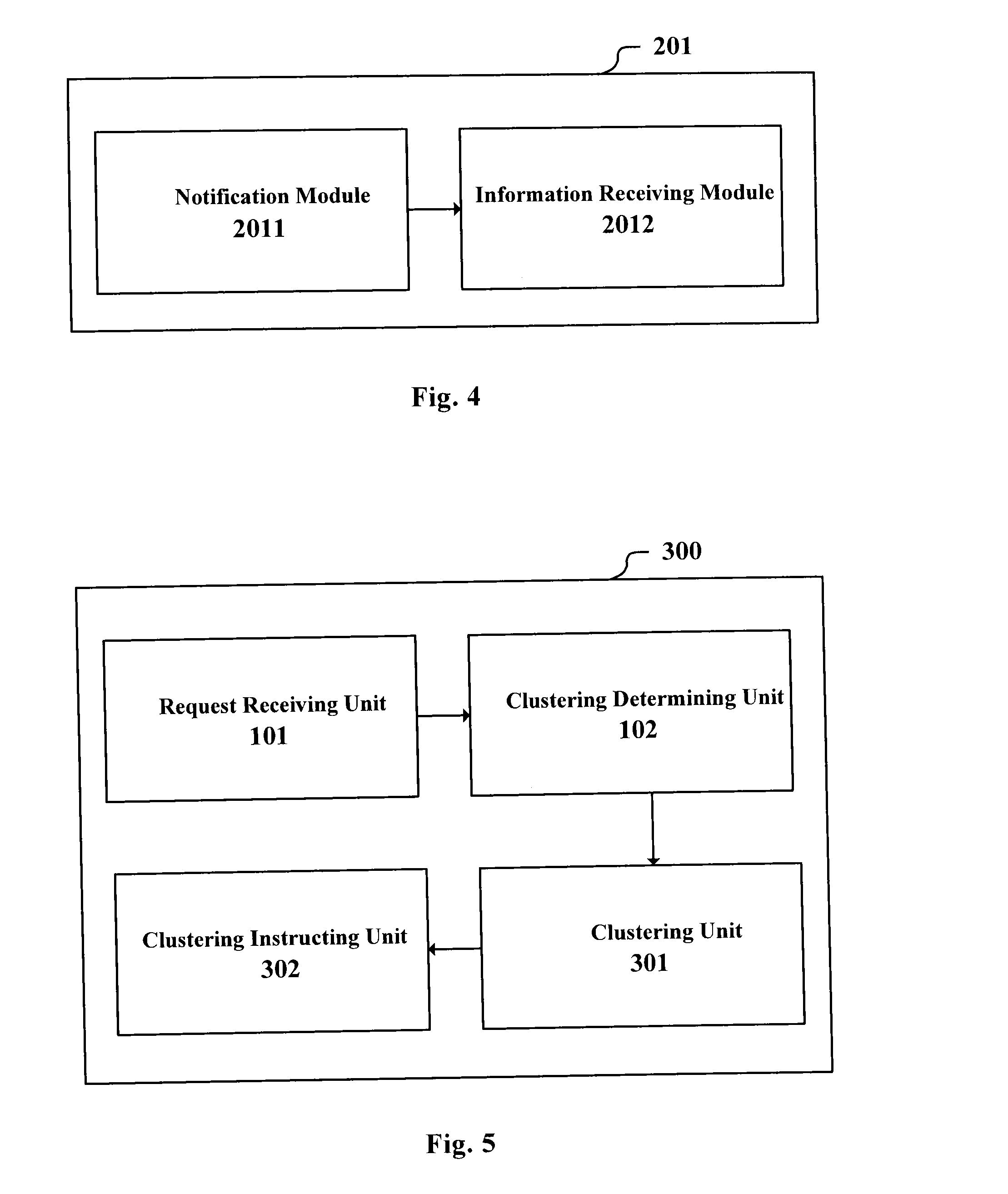Apparatus, method and base station for clustering small cells in TDD networks
a technology of tdd network and small cell, applied in the field of wireless communication, can solve problems such as sub-frame cross interference between adjacent small cells, and achieve the effects of reducing cross interference, increasing network resource utilization efficiency, and increasing throughpu
- Summary
- Abstract
- Description
- Claims
- Application Information
AI Technical Summary
Benefits of technology
Problems solved by technology
Method used
Image
Examples
first embodiment
The First Embodiment
[0038]FIG. 2 illustrates a block diagram of an apparatus 100 for clustering small cells in Time Division Duplexing (TDD) networks according to an embodiment of the present application. The apparatus 100 includes: a request receiving unit 101, configured to receive a clustering request for performing dynamic clustering from a small cell base station; and a clustering determining unit 102, configured to determine whether to perform clustering at least based on the clustering request.
[0039]Specifically, the apparatus 100 is used to receive the clustering request from the small cell base station within its controlling range, and determine whether to perform clustering based on the related parameters of the clustering request. In other words, the apparatus 100 adopts a triggered clustering scheme.
[0040]As an example, with respect to each small cell base station, the clustering request is sent when at least one of the following conditions is satisfied: an interference ...
second embodiment
The Second Embodiment
[0044]FIG. 3 illustrates a block diagram of an apparatus 200 for clustering small cells in TDD networks according to another embodiment of the present application. Besides the respective components shown in FIG. 2, the apparatus 200 further includes: an information acquiring unit 201, configured to acquire information required for clustering from each small cell base station, after the clustering determining unit 102 determines to perform clustering.
[0045]The acquired information depends on the clustering method to be used. For example, the information can include a transmitting feature among the small cells and data related to uplink / downlink traffic. The transmitting feature can be transmitting loss between small cells, and the transmitting loss can be coupling loss or path loss between small cells. In addition, the transmitting feature can also be the backhaul link delay between small cell base stations.
[0046]Alternatively, the transmitting feature can be a c...
third embodiment
The Third Embodiment
[0055]FIG. 5 illustrates a block diagram of an apparatus 100 for clustering small cells in TDD networks according to another embodiment of the present application. Besides the respective component shown in FIG. 2, the apparatus 300 further includes: a clustering unit 301, configured to perform clustering on each small cell after the clustering determining unit 102 determines to perform clustering; and a clustering instructing 302 unit, configured to instruct clustering results to each small cell base station after the clustering unit 301 performs clustering.
[0056]The clustering unit 301 can perform clustering using various methods, including but not limited to the various clustering methods according to embodiments of the present invention to be described later.
[0057]As an example, the clustering results can be sent via an X-2 interface. Herein, the clustering results include information of small cells included in each cluster, and can also include the selection ...
PUM
 Login to View More
Login to View More Abstract
Description
Claims
Application Information
 Login to View More
Login to View More - R&D
- Intellectual Property
- Life Sciences
- Materials
- Tech Scout
- Unparalleled Data Quality
- Higher Quality Content
- 60% Fewer Hallucinations
Browse by: Latest US Patents, China's latest patents, Technical Efficacy Thesaurus, Application Domain, Technology Topic, Popular Technical Reports.
© 2025 PatSnap. All rights reserved.Legal|Privacy policy|Modern Slavery Act Transparency Statement|Sitemap|About US| Contact US: help@patsnap.com



